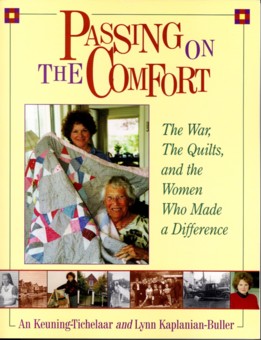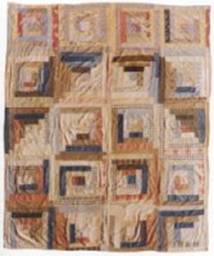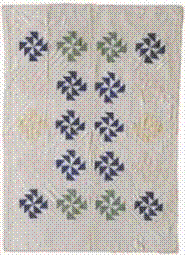An excerpt from the book and photos were provided by the publisher and are at
the end of review
This heartwarming book is primarily set in the Netherlands
during and immediately following WWII. It is well written and easy to read
the emotional and historical story of An. An, now 82, was a devoted
anti-war protestor in today's terms. At that time she was part of the
resistance movement who helped the refugees and Jewish people during the
terrible years of World War II in Holland. An married a Mennonite
minister, Herman, in order to help these survivors as much as humanly
possible. She and Herman helped thousands of women, children and men
trying to escape by housing them secretly in their attic for months at a
time when necessary. They provided food, clothes, bathing, and
bedding. The stories An writes are personal experiences of hers
that could not be found anywhere else. I was crying and touched and on the
edge of my seat much of the time. It was suspenseful as she talked about
her daily work. I learned a great deal more about the European's War
experience and I am left humbled by this book. it was so enriching to my
life, I highly recommend this book to you. It would be a wonderful gift,
especially to older people that may have been more intricately involved
with WWII due to their age.
It wasn't until after the War ended that An contacted the Mennonite
Relief Organization or Mennonite Central Committee (MCC) to provide
blankets for the people leaving her church hiding place to re-enter the
community and return to their former land. The MCC sent very thin quilts-
or rag blankets - as they referred to them, as quilt was not a well known
term. They were too thin for sleeping on or under in Holland's climate, so
An contacted them again and was sent 50 comforters (tied, not quilted) and
quilts. These provided enough for the people with some left over. It
is these quilts, utility in description, but graphically beautiful in
their visual essence, that are now touring on exhibit and featured in the
book.
Lynn Kaplanian-Buller is the co-author and younger women,
who came to Holland from Minnesota during the Vietnam War with similar
desires to help the peace cause. She had attended a Mennonite church in
the US, but ended up marrying an Israeli man she met in Holland, and together
they worked for peace between the Palestinian's and the Israelis. Lynn
came upon the quilts while on a retreat of sorts, in a home where An was
storing the quilt. It was years later that she met An, and even
years after that when the quilts were put into her care, as a gift from
An.
The quilts came in simple block patterns of log cabin,
monkey wrench, bowties and other familiar patterns. Sometimes they had
cables quilted in the borders with diagonal lines across the center, while
others were tied. Although the colors seem light and are probably faded
from use, they still have color and reflect a hidden beauty in the photos
taken of them. There are no patterns or close-ups because this is not a
quilt book of that type. The authors provide a source if you would like to
make the quilts or donate some to the relief effort today.
Mennonite groups in Canada and Pennsylvania provided much
of the clothing, shoes, food, quilts and blankets to aid the War effort.
These groups felt a closer tie to Holland than the other countries because
of their past affiliation with this small country that had helped them in
their time of need. Much of what Lynn contributes to the book are
quotes and facts from Mennonite and Holland archives, which add a
great deal to the story. The old photographs featured throughout the book
do much to enhance the readers understanding in terms of setting the time
period and the landscape, putting faces to the people, and color photos
show the quilts. There are maps too. The book does not get the least bit
bogged down in facts about the war. It is about the people.
Did you know that there were children's camps? When the
War ended those people who collaborated with the Germans were tried and
sentenced, leaving thousands of children stranded. Did you know that shoes
were the hardest item to provide for the refugees, so the new owners would
cut out the toes to make them fit and put wooden soles on those with
holes? Did you know the women wore dresses made from tablecloths and
bedspreads and that coats were cut down to fit others? There are many
threads of history woven through this biographical book of two strong and
giving women with huge hearts. This book is in honor of them and all the
attention they and their quilt exhibit receive is well deserved.
- end -
Here is an excerpt taken from the middle of the book.
Published
by Good Books; May 2005; $14.95US; 1-56148-482-2
Lynn
-- January 1980
Discovering the quilts
 "I
wasn't sure why we had come. As we approached the idyllic country house
over the only access, a bicycle path laid out of bricks, I wondered how
the weekend would go, especially because we were bringing the only child.
These gatherings of Palestinian students, all male, mostly Christian,
usually centered on the menu. The guys had taught themselves to cook while
studying and enjoyed (almost) nothing more than spending hours planning,
shopping for, preparing home recipes, and telling jokes in Arabic together
in a big kitchen, then eating it with their loved ones. Everything they
did together -- washing up and preparing coffee, too -- was so in contrast
to the usual image of Arab men that we women used to laugh. "I
wasn't sure why we had come. As we approached the idyllic country house
over the only access, a bicycle path laid out of bricks, I wondered how
the weekend would go, especially because we were bringing the only child.
These gatherings of Palestinian students, all male, mostly Christian,
usually centered on the menu. The guys had taught themselves to cook while
studying and enjoyed (almost) nothing more than spending hours planning,
shopping for, preparing home recipes, and telling jokes in Arabic together
in a big kitchen, then eating it with their loved ones. Everything they
did together -- washing up and preparing coffee, too -- was so in contrast
to the usual image of Arab men that we women used to laugh.
"If
any authorities picked up these six guys for questioning, they wouldn't
agree on anything politically, but they could recite -- down to the spices
-- the complete menus of the previous week. Gentle, homey guys, they
thrived on speaking their native language together, especially enjoying
the intricate double entendres which Arabic provides.
"The
most far-flung of the group had been complaining to his fellow psychology
students that he was missing his "brothers." One of their
friends, after consulting with her parents, invited the student named
Samir, to come to her parents' weekend house with all his Palestinian
buddies and their families. So here we came.
"Avo
and I and our three-year-old daughter, Nadine, traveled up from Landsmeer,
just above the Amsterdam harbor. The oldest of the student lot and the
most settled, we both worked at demanding jobs and tried to bring Nadine
up in the best of three cultures -- Palestinian, American, and Dutch --
mostly during evenings and weekends. We were tired constantly. Upon
arriving, I was relieved to see that the farmhouse was large enough that I
could peel off early to sleep next to Nadine if the guys started one of
their all-night, low-stakes poker games. Nadine would wake early the next
morning, of course, and it would be my turn to get up with her.
"After
seven years in the Netherlands, I still marveled at Europeans' ability to
get together just to be together or to take a walk just for the pleasure
of it. In Minnesota, we got together to Do Something Useful. Celebrations
counted as a good reason, but there had to be a focus. And one went for a
walk only to blow off steam, to cogitate heavily, or to get to some place
specific. We would never just walk around together. Always eager to
fulfill others' expectations, I often felt adrift in these gatherings of
Palestinian men and European women, most of whom were still students.
Added to this was my role as a working mother and I often felt somewhat
confused about how I fit into these events. I learned to stop worrying
about what others might be expecting of me and tried to do what made the
most sense, while doing no intentional harm to others.
"We
walked into the farmhouse which had a huge open ceiling where the hayloft
had been removed, and hanging on the wall was a quilt which looked very
North American. The house was charming. Full of antique toys and built-in
cupboards, it was warmed by a cast iron pot-bellied stove which threw off
a cozy heat, necessary to counter the drafts which sneaked in around the
poured-glaze windows. Some of the bedrooms, converted stalls, had very low
ceilings. Others, up under the hayloft, were very high and long. As I
walked through, my wonder increased. A handmade quilt covered every bed,
and every closet held stacks of more folded quilts.
"Who
lived here? Where did these quilts come from? Who were these people? I
asked Samir.
"He
thought the parents of his friend were a minister couple -- Baptists, or
something to do with Menno Simons. What? Menno Simons? That was a name I
hadn't heard since my church instruction class in Mt. Lake, Minnesota. How
could there be Mennonites way over here, and with such a long history? All
I knew was that Mennonites had all been emigrants from colonies in the
Ukraine, they all spoke a 16th-century Dutch/Germanic dialect, and they
had come to North America to avoid being pressed into military service,
based upon principals of non-violence set out by Menno Simons. Had they
started a colony in the Netherlands, too?
"A
new chapter opened in my life. We had a lovely weekend. Nadine slept in
the built-in bed closet, which was painted a lovely salmon-pink with
turquoise trim. And when we arrived home, our son was conceived in the
afterglow of a deeply pleasing day.
 "The
quilts stayed in my mind. The week following, I tracked down the telephone
number of the house's owners and asked Mrs. Keuning if it would be
possible for me to purchase one of the quilts, explaining that they
reminded me so much of home. Mrs. Keuning said that she couldn't sell me a
quilt because they weren't her property, but that I could come choose one
to have. I didn't understand her gesture -- my knowledge of the Dutch
language was not strong enough to pick up subtleties -- nor did her offer
fit into any imaginable context in my mind. I knew the price of quilts in
quilt stores, and I certainly didn't consider just taking one from a
stranger. Besides, if they weren't hers, how could she give one away? "The
quilts stayed in my mind. The week following, I tracked down the telephone
number of the house's owners and asked Mrs. Keuning if it would be
possible for me to purchase one of the quilts, explaining that they
reminded me so much of home. Mrs. Keuning said that she couldn't sell me a
quilt because they weren't her property, but that I could come choose one
to have. I didn't understand her gesture -- my knowledge of the Dutch
language was not strong enough to pick up subtleties -- nor did her offer
fit into any imaginable context in my mind. I knew the price of quilts in
quilt stores, and I certainly didn't consider just taking one from a
stranger. Besides, if they weren't hers, how could she give one away?
"About
10 years later, I was busy thinking up ways to tell the story of
Thanksgiving Day to the Dutch customers of our American bookstores in
Amsterdam and The Hague. Quilting had become a very popular handcraft by
then, and our store was an important source for Dutch women wanting to
learn the patterns and history of North American quilts. Recalling the
quilts in the farmhouse near Drachten, I called Mrs. Keuning again to ask
if we could perhaps exhibit the quilts in the bookstore's art gallery. As
I explained who I was, she interrupted: 'Lynn! When are you coming to
get your quilt?'
'I
can't accept a quilt from you,' I stammered.
'Well,
why not?' she asked. 'What have I done wrong now?'
'You
haven't done anything wrong at all,' I explained. 'It's just
much too large a gift to extend to a stranger, or to accept from a
stranger. But would you consider showing the quilts at an exhibition? And
coming for Thanksgiving dinner in the store? Perhaps we can get to know
each other better.'
"An
agreed.
"A
few months later, as she, her daughter, Anke, and I walked past the large
store window hung with her quilts, she gasped. Later, she explained that
the quilts had served as the sole keeper of her stories about all the
struggles of the War years. When she saw the quilts exhibited in public,
she felt freed to also tell her stories for the first time. Before she
told others, she wanted to tell her daughter who, until then in 1989, had
no idea of the part her parents had played in the Underground Resistance
during World War II. Until that time, An had simply said that the quilts
came to Friesland from North Americans as relief goods for the Europeans
who had no blankets left after the war.
"An
and her husband Herman, their daughter Anke, and my family -- Avo, Nadine,
and Paul, now 10 -- ate Thanksgiving dinner together and learned to know
each other a little bit. An and I felt a recognition and a friendship far
older and deeper than was possible. It was a kind of comfort and a
wordless understanding though we had just met, and she is 28 years older
than I am.
"I
would not hear the stories, however, until much later."
Copyright
© 2005 by Good Books, Intercourse, PA 17534
Reprinted
from Passing on the Comfort:
The War, The Quilts, and the Women Who
Made a Difference. New Pathways into Quilt History written by Kimberly Wulfert, Copyright by Good Books (www.goodbks.com).
Used by permission. All rights reserved.
Author
info:
An Keuning-Tichelaar was
born in 1922 in Makkum, a harborplace near Witmarsum, Friesland, the
Netherlands. Married in 1944, she is the mother of three children. Her
home, a parsonage, has always been a haven for needy children, youth, and
adults.
Lynn
Kaplanian-Buller
was born in 1949 in Heron Lake, Minnesota. She and her husband raised two
children in three cultures while taking over and managing a bookstore
company in the Netherlands (www.abc.nl).
She is active in the Dutch Mennonite Relief organization, her own church
council, and Rotary.
The quilts were traveling on tour as late
as 2006, which was coordinated by the Mennonite Central Committee. Here's what
they say about it on to their
Web site:
"The Passing on the Comfort travelling
exhibit has completed a successful first phase reaching 38 different communities
since April 2005. No bookings are being accepted for the exhibit while we
exploring several options for the continuation of the project. Please direct any
questions to Dave Worth at
dgw@mcc.org." |